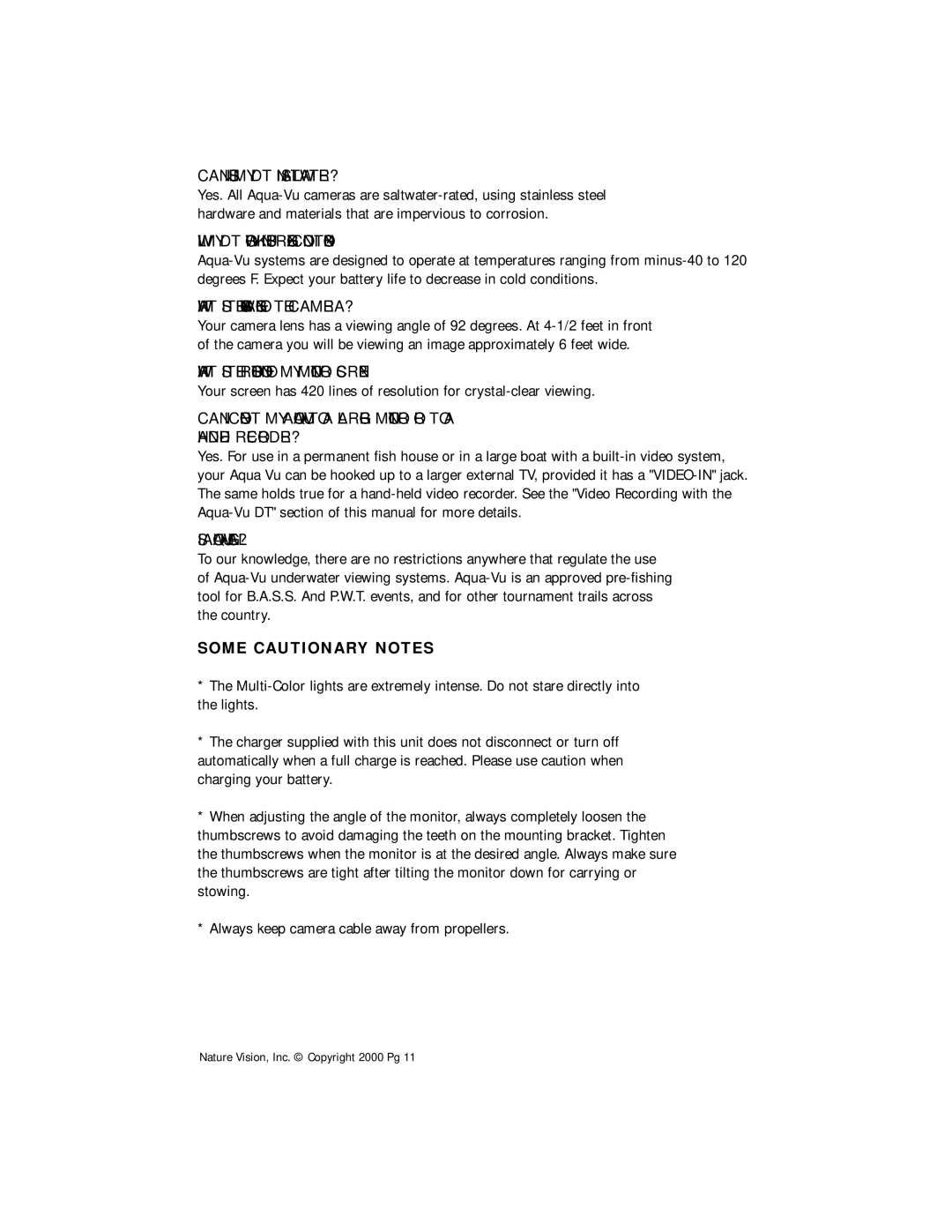CAN I USE MY DT IN SALTWATER?
Yes. All
WILL MY DT WORK IN SUBFREEZING CONDITIONS?
WHAT IS THE VIEWING ANGLE OF THE CAMERA?
Your camera lens has a viewing angle of 92 degrees. At
WHAT IS THE RESOLUTION OF MY MONITOR SCREEN?
Your screen has 420 lines of resolution for
CAN I CONNECT MY
Yes. For use in a permanent fish house or in a large boat with a
IS AQUA-VU LEGAL?
To our knowledge, there are no restrictions anywhere that regulate the use of
SOME CAUTIONARY NOTES
*The
*The charger supplied with this unit does not disconnect or turn off automatically when a full charge is reached. Please use caution when charging your battery.
*When adjusting the angle of the monitor, always completely loosen the thumbscrews to avoid damaging the teeth on the mounting bracket. Tighten the thumbscrews when the monitor is at the desired angle. Always make sure the thumbscrews are tight after tilting the monitor down for carrying or stowing.
*Always keep camera cable away from propellers.
Nature Vision, Inc. © Copyright 2000 Pg 11
